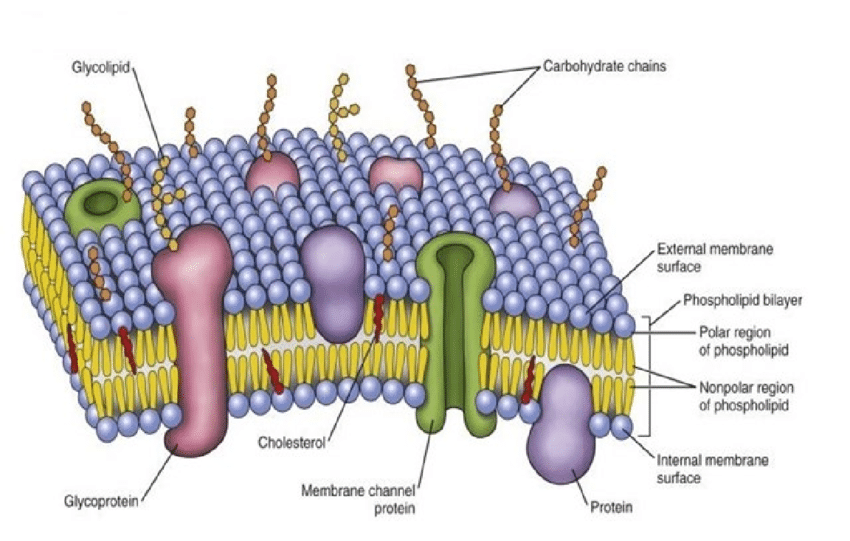Membrane structure
Phospholipids form a bilayer that is the structural basis of all membranes. Due to their non-polar fatty acid tails, membranes provide a barrier to the movement of most polar molecules and ions.
Fluid mosaic model:
Fluid: Molecules can move around within a monolayer unless anchored to the cytoskeleton.
Mosaic: Refers to the appearance of the different molecules (phospholipids and proteins) when viewed from above.
Model: Representation of membrane structure which is consistent with available data.

There are 2 types of membrane protein, intrinsic (or integral) and extrinsic (or peripheral). Intrinsic proteins are embedded in the phospholipid bilayer and span the bilayer. Extrinsic proteins are not embedded in the phospholipid bilayer but are associated with one side of the membrane.
Membrane components:
Cholesterol:
Small molecule that fits in between the fatty acid tails and stabilises the membrane by binding to the fatty acid tails.
Controls the fluidity of the membrane and helps prevent polar molecules and ions crossing the membrane.
Proteins:
Act as channels or carriers to transport polar molecules and ions across the membrane via facilitated diffusion or active transport.
Also act as enzymes e.g. ATP synthase in mitochondria.
Glycoproteins:
Proteins modified in the Golgi apparatus by the addition of carbohydrate chains.
Act as antigens for cell recognition as self or non-self and act as receptors for chemical signals e.g. hormones to allow cell-to-cell signaling.
Also help cell adhesion to form tissues.
Glycolipids:
Lipids modified in the Golgi apparatus by the addition of carbohydrate chains.
Act as antigens for cell recognition and help cell adhesion to form tissues.
 Knowt
Knowt
